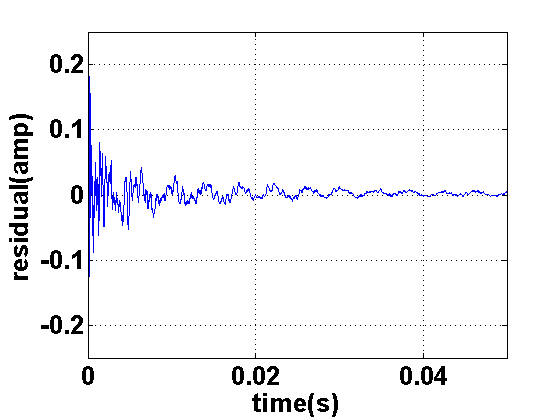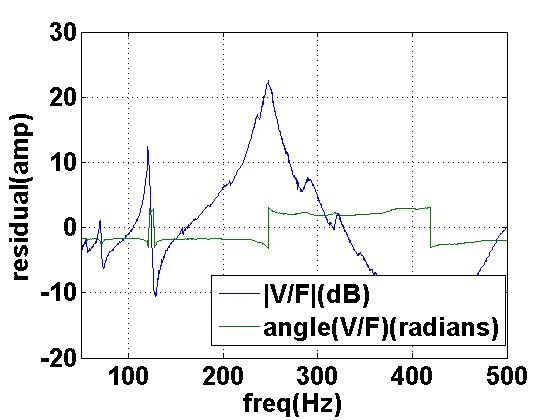 |
 |
 |
From our synthesis model, the body resonator has a driving-point admittance that
filters the output of the string model to transform force waves along the string
into acceleration waves at the bridge [44]. Taking the inverse-FFT of the measured driving-point
admittance, we obtain the impulse response of the body of the instrument.
This time-domain signal can be stored as a wavetable for convolution with the output of the synthesis
string-model. Figures 39, 40, 41 and 42 show the time-domain
signal and spectrum (both magnitude and phase) of a measured guitar's body impulse response, respectively.
As shown, the impulse response lasts well over ![]() ms long. Viewing its spectrum in Figure 41,
we note peaks that occur near
ms long. Viewing its spectrum in Figure 41,
we note peaks that occur near ![]() and
and ![]() Hz.
Hz.